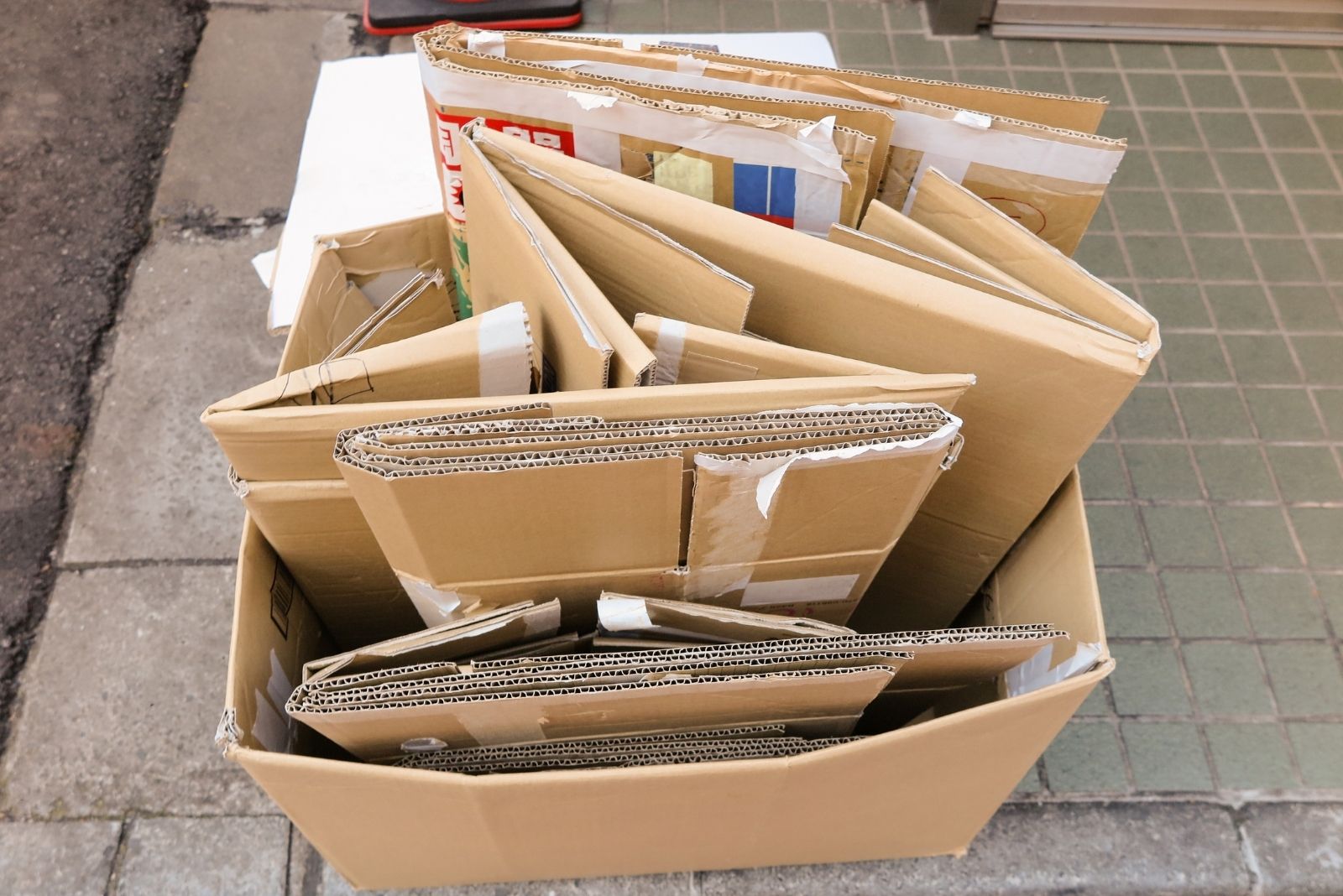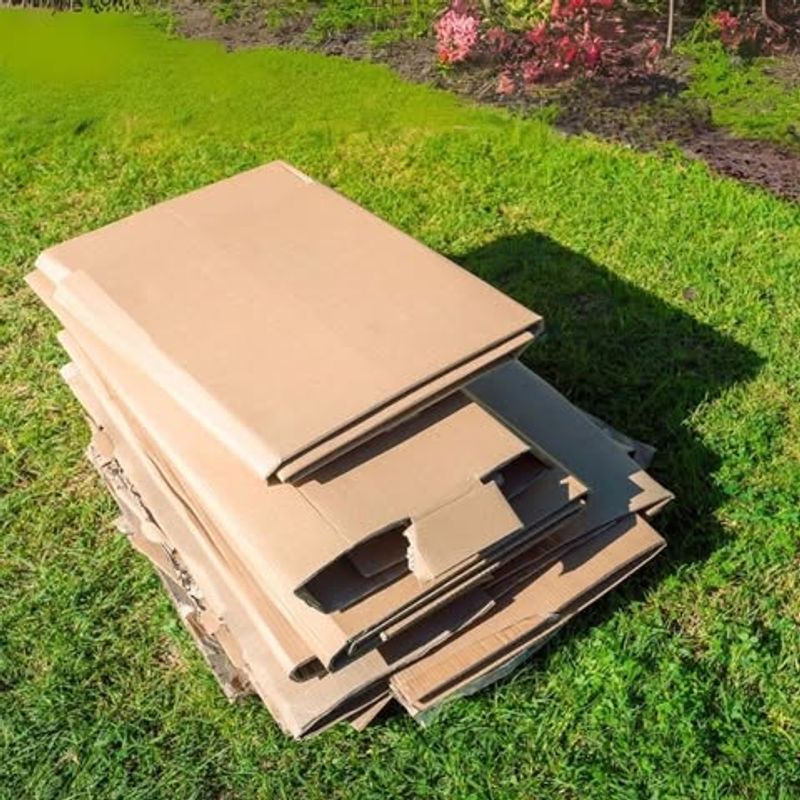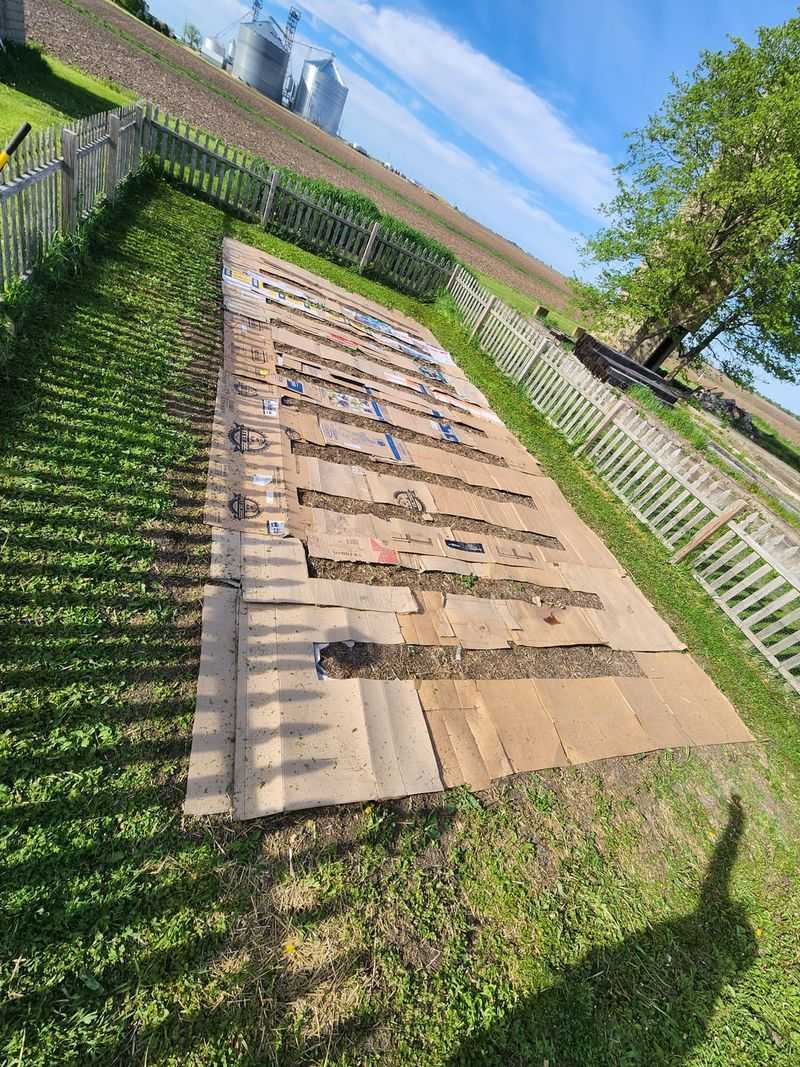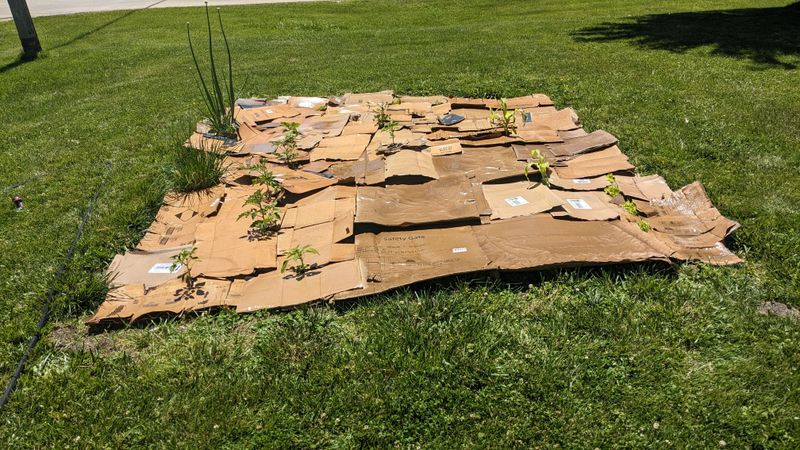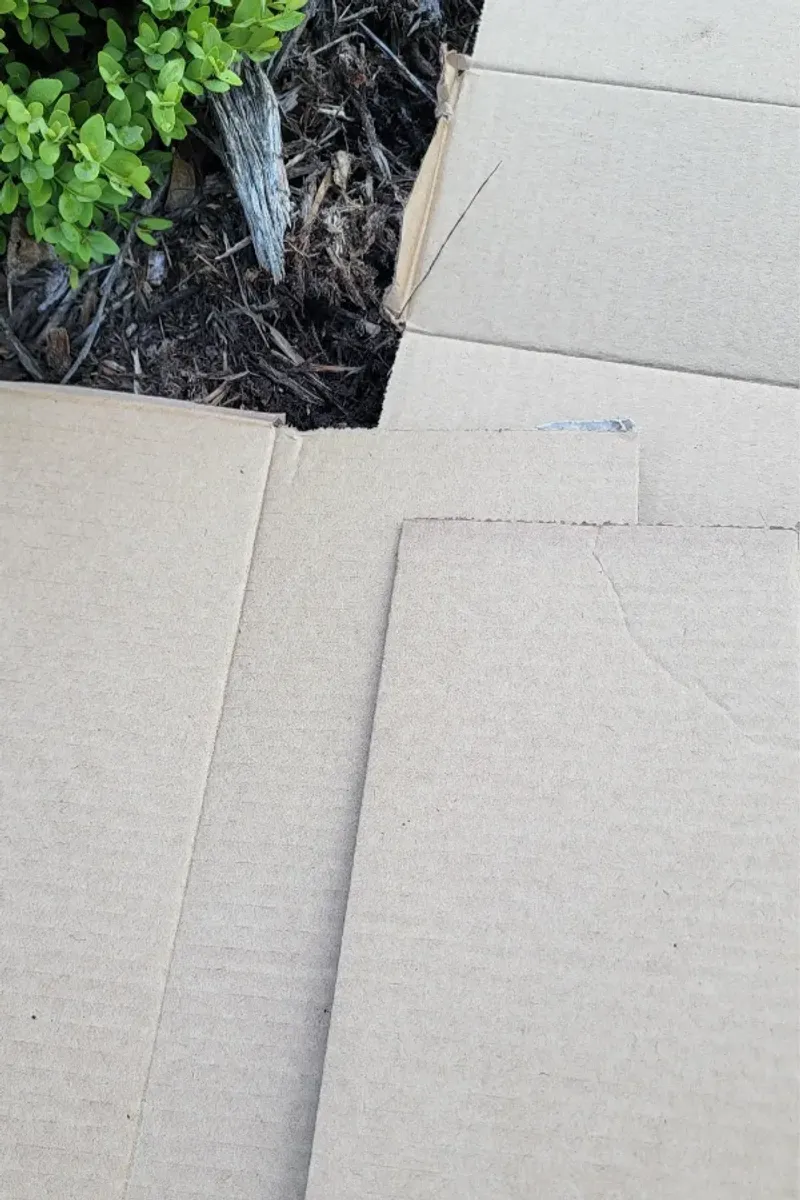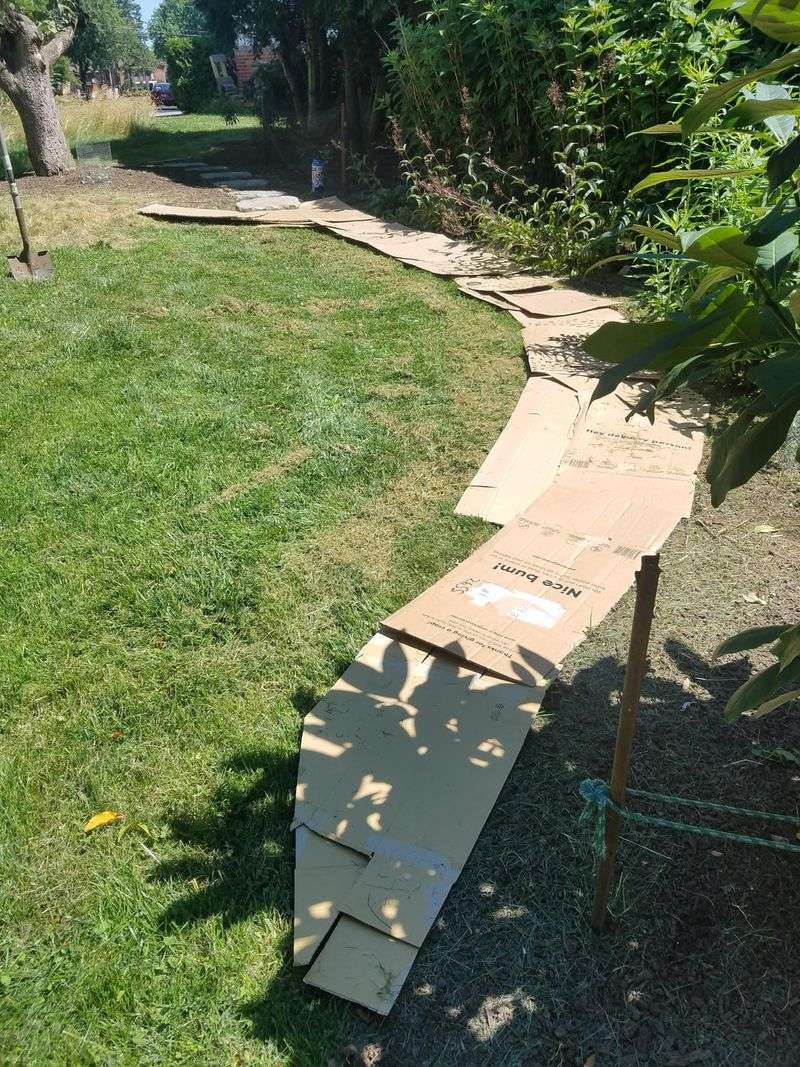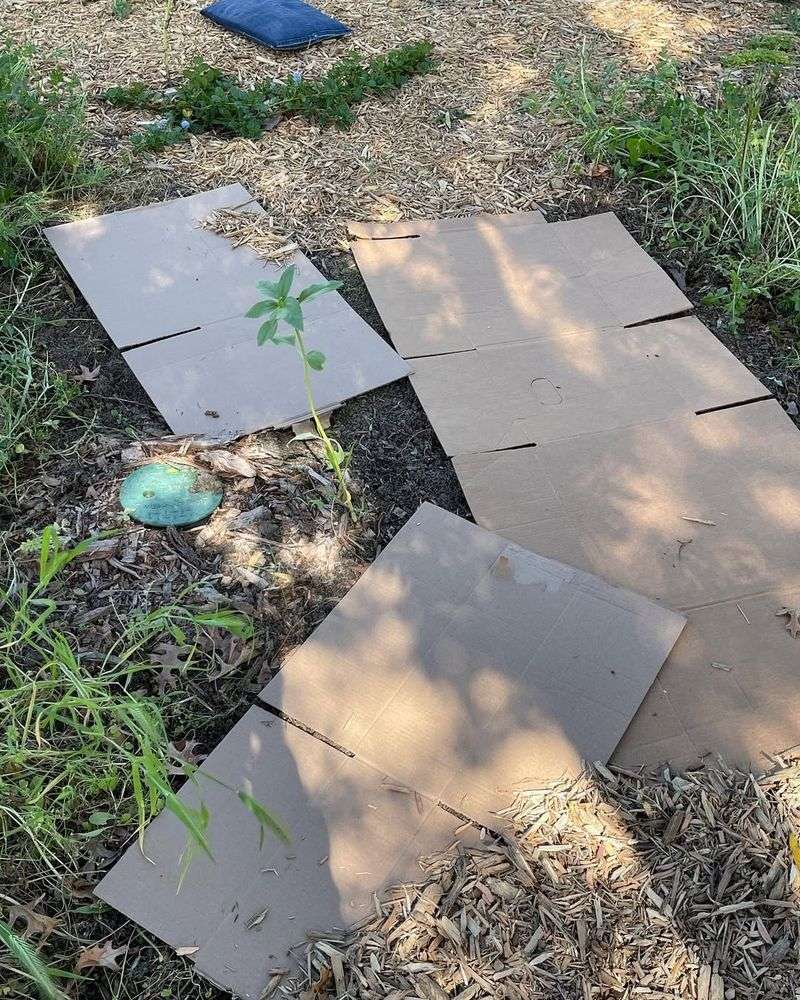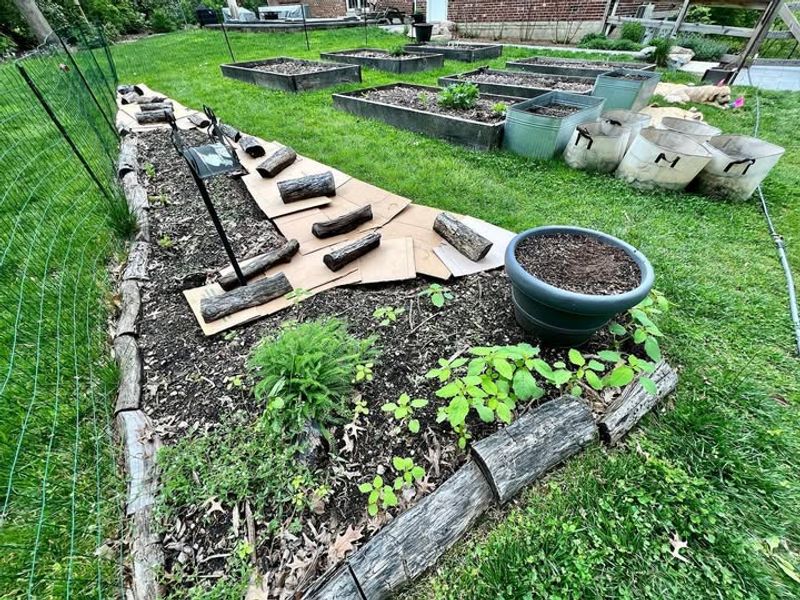Missouri gardeners know that weeds can take over a yard faster than you can say summer. Instead of reaching for harsh chemicals, many folks are turning to a simple household item that works wonders: cardboard.
This natural barrier smothers weeds, improves soil health, and costs next to nothing, making it a smart choice for anyone looking to maintain a beautiful yard the eco-friendly way.
1. Layer Under Mulch For Long-Lasting Protection
Placing sheets beneath your wood chips or bark creates a double defense against stubborn weeds. The cardboard blocks sunlight completely, which prevents seeds from sprouting underneath your decorative layer.
In my experience, this method works beautifully around flower beds and pathways. Missouri’s humid springs mean weeds grow aggressively, but this combination keeps them at bay for months.
Make sure to overlap edges by several inches so no gaps let light through. Water everything thoroughly after laying it down to help decomposition start.
2. Create Weed-Free Pathways Between Garden Rows
Walking paths between vegetable rows often turn into muddy, weed-filled messes. Laying down thick cardboard solves both problems at once by providing a clean surface and blocking unwanted growth.
I’ve noticed this works especially well in Missouri vegetable gardens during our rainy seasons. The material absorbs moisture without getting slippery, and it breaks down slowly enough to last through harvest time.
For best results, use double layers in high-traffic areas. You can top it with straw or leave it bare depending on your aesthetic preference.
3. Protect New Plantings From Competing Roots
Young seedlings struggle when aggressive weeds steal nutrients and water from the soil. Cutting cardboard into circles and placing them around new transplants gives your plants a fighting chance to establish strong root systems.
This technique has saved countless tomatoes and peppers in my Missouri garden. The barrier keeps grass roots from invading while allowing water to seep through gradually.
Leave a small gap around the stem to prevent moisture buildup against the plant. Replace the cardboard as it decomposes throughout the growing season.
4. Smother Stubborn Grass Before Starting New Beds
Converting lawn into garden space traditionally requires hours of backbreaking digging. A simpler approach involves covering the grass with cardboard layers and waiting for nature to do the work.
Missouri’s warm summers speed up decomposition, so starting this process in spring means you’ll have workable soil by fall. The grass dies completely underneath, and earthworms move in to improve soil structure naturally.
Wet everything down first, then add compost or leaves on top. This sheet mulching method eliminates the need for herbicides completely.
5. Maintain Moisture Levels During Dry Spells
Summer droughts hit Missouri hard some years, and keeping soil hydrated becomes a daily challenge. Cardboard acts as an insulating blanket that reduces evaporation while still allowing rain to penetrate when it finally arrives.
For me, this has meant less frequent watering and healthier plants overall. The material keeps soil temperatures more stable too, which roots appreciate during heat waves.
Apply it early in the season before temperatures spike. As it breaks down, it adds organic matter that improves water retention even further.
6. Build Compost Directly On Problem Areas
Weedy patches can become rich growing spaces through lasagna composting. Start with cardboard as your base layer, then alternate green and brown materials right on top of the problem spot.
I’ve used this method to reclaim neglected corners of my Missouri yard. By spring, the entire pile has decomposed into beautiful soil, and the weeds underneath never stood a chance.
Water each layer as you build it up. The cardboard prevents weed seeds from escaping while beneficial organisms break everything down into nutrients.
7. Prepare Fall Gardens While Protecting Soil Structure
End-of-season cleanup often leaves bare soil exposed to erosion and weed seeds. Covering empty beds with cardboard through winter protects the ground while giving you a head start for spring planting.
Missouri winters can be unpredictable, with freeze-thaw cycles that damage unprotected soil. The cardboard shield prevents compaction and keeps organic matter from washing away during heavy rains.
Come planting time, simply cut holes through the decomposed material. Your soil will be soft, weed-free, and ready for seeds or transplants immediately.

